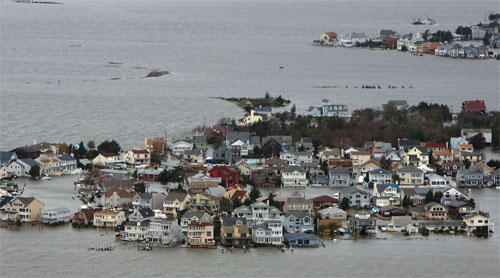 Superstorm Sandy certainly earned its name: The combination hurricane/nor'easter spawned high winds and high water, flooding lower Manhattan, erasing landmarks from the Jersey Shore and dumping three feet of snow in West Virginia.
Superstorm Sandy certainly earned its name: The combination hurricane/nor'easter spawned high winds and high water, flooding lower Manhattan, erasing landmarks from the Jersey Shore and dumping three feet of snow in West Virginia.
East Coast cities and towns from North Carolina to Connecticut felt Sandy's power—and in the coming weeks and months, residents in affected areas will likely face another impact of the storm: higher premiums and less availability of Homeowners' insurance. A national catastrophe fund could soften future blows by spreading risk across state lines and pooling capital, allowing for the “pre-funding” of all natural disasters in the U.S.
It certainly sounds like a great idea if you live in Florida or other coastal states, but imagine how it sounds to taxpayers in states that aren't affected by such weather events. The truth is, however, that people in those states end up paying for disasters anyway, in the form of Federal Emergency Management Agency (FEMA) and other government-administered post-disaster assistance.
Recommended For You
Want to continue reading?
Become a Free PropertyCasualty360 Digital Reader
Your access to unlimited PropertyCasualty360 content isn’t changing.
Once you are an ALM digital member, you’ll receive:
- Breaking insurance news and analysis, on-site and via our newsletters and custom alerts
- Weekly Insurance Speak podcast featuring exclusive interviews with industry leaders
- Educational webcasts, white papers, and ebooks from industry thought leaders
- Critical converage of the employee benefits and financial advisory markets on our other ALM sites, BenefitsPRO and ThinkAdvisor
Already have an account? Sign In Now
© 2025 ALM Global, LLC, All Rights Reserved. Request academic re-use from www.copyright.com. All other uses, submit a request to [email protected]. For more information visit Asset & Logo Licensing.








